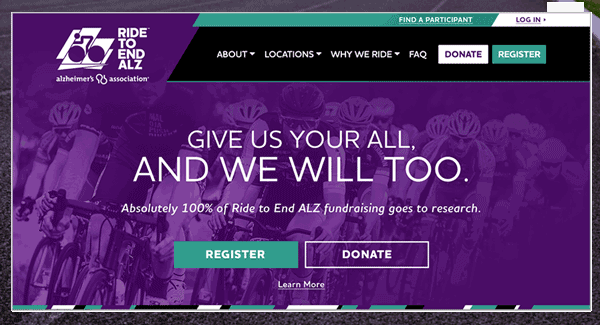As we approach the end of the year, we’re able to reflect on 2019 and consider carefully the various trends that appeared. We think about which are here to stay and which will likely fade out in the years to come.
In today’s guest blog post, our friends at Salsa share why they believe the following 2019 trends will stick around for a little while:
- Leveraging technology to streamline nonprofit strategy
- Using Twitter as a primary advocacy campaign platform
- Decreased nonprofit funding from the government
- Using donor-advised funds for charitable giving
- Changing the approach to overhead costs for nonprofits
Each of these changing strategies has a major impact on the development of nonprofit strategies, especially marketing strategies. This is because as times change, we want the image of our nonprofit that we present to supporters to be as timely and considerate as possible.
Let’s jump into these trends and how they’ll impact how your nonprofit strategizes for 2020!
1. Leveraging technology to streamline nonprofit strategy
The world of tech has advanced rapidly for all organizations over the years, but especially for nonprofits. In 2019, we’ve found that there are different tools that can help with every aspect of your nonprofit’s fundraising, marketing, event, and management strategies.
This isn’t likely to change anytime soon. However, what we do expect to see moving forward is an increase in nonprofit organizations looking for all-in-one solutions to help them do almost everything in their strategy.
This means they’ll be looking for a solution with:
- Fundraising software. Fundraising is a key aspect of your nonprofit’s strategy. More comprehensive software will support online donation pages, peer-to-peer fundraising campaigns, event fundraising initiatives, and reports on donation metrics. You can read more about fundraising software options with this post from Salsa Labs.
- Constituent relationship management (CRM) software. CRM software is used to save information about each of your nonprofit’s donors in order to build a relationship with them for the future. It’s also used to create donor segments for more accurate marketing strategies.
- Marketing automation software. Marketing automation doesn’t mean that the tech does marketing for you, but it helps streamline your marketing services. For instance, you can create email drip streams based on the actions a supporter takes on your site. This also leverages the segments you create in your CRM.
- Online advocacy software. When nonprofits post an online petition or click-to-call advocacy campaign, they’re using software that makes it easy for supporters to participate and make a difference while advocating for your cause. The actions supporters take should be saved to your CRM to show a complete picture of their involvement with your nonprofit.
Before you buy software to fill the gaps in your nonprofit strategy, consider that there are some solutions out there that will help your nonprofit do it all.
And, even if these solutions don’t offer everything, they’re starting to integrate with other solutions to fill those gaps.
For example, a complete fundraising CRM may offer everything you need for donor data management, engagement, and fundraising, but they don’t have their own matching gift tool. So, that software may integrate with a matching gift database tool to help nonprofits further boost revenue.
2. Using Twitter as a primary advocacy campaign platform
While social media is a trend that’s been around for a while now (and isn’t going away anytime soon), we expect to see a continuation of the use of Twitter for effective advocacy campaigns.
When hoards of people publically call out a representative on Twitter to pay your cause the attention it deserves, decision-makers are bound to listen.
Twitter makes a perfect platform due to its recent use in the political sphere. Politicians and decision-makers are using this social media platform to reach public audiences, so it’s an ideal place for the public to also reach them.
Here are the steps a nonprofit can take to use grassroots software to leverage Twitter for advocacy campaigns:
- Create a targeted action page for your supporters to contact their representatives.
- Draft a message for supporters to send to their representatives and allow them to customize it if they so choose.
- Make sure your supporters can see the targeted action by posting it to social media and emailing it out to your email list.
- Keep track of the success of your campaign by pulling reports showcasing the involvement of your various supporters.
Twitter is already playing a major role in the world of politics and that of nonprofits. Leverage this powerful tool to encourage representatives to take action in support of your cause.
3. Decreased nonprofit funding from the government
Nonprofits rely on a multitude of funding sources to power their mission. These include federal aid and grants, individual contributions, private grants, sponsorships, corporate philanthropy initiatives, and more. However, nonprofits will likely need to rebalance these sources in the coming years.
Cuts in government spending have resulted in a decrease in government funding for nonprofits.
This means nonprofits will need to rely more heavily on their other funding sources, getting more creative with their approach to fundraising. We recommend adding a tech twist to ensure even your most traditional fundraising initiatives are as productive, efficient, and profitable as possible. For example:
- Add a peer-to-peer fundraising element to your classic fundraising 5K.
- Use text-message keywords for clues in a scavenger hunt to expand your mobile marketing lists.
- Incorporate mobile bidding into your next charity auction.
- Establish multiple giving methods from texting to online donation pages to an eCommerce store.
With a decrease in one of the primary funding sources for nonprofits, it’s important that you find a way to make up the money through other methods.
Our recommendation is to fully embrace technological advancements in order to maximize your donations from other sources and make up for the loss of federal revenue sources.
4. Using donor-advised funds for charitable giving
Donor-advised funds are one of the fastest-growing charitable giving trends in the nonprofit industry right now. Essentially, a donor-advised fund is an account created by a donor to contribute funding to nonprofits without immediately picking a recipient.
Here’s how it works:
- A donor creates a donor-advised fund account and contributes cash, stock, or other assets to it. They immediately receive tax benefits for contributing to this account.
- Other parties, such as foundations or sponsoring organizations, manage the fund and make investments to help it grow.
- The donor advises the organization managing the fund on where gifts should be made. Funding to nonprofits is made in the form of a grant from the sponsoring organization. With a decrease in one of the primary funding sources for nonprofits, it’s important that you find a way to make up the money through other methods.
Due to the hefty tax benefits for the donor, these funds have become increasingly popular over the recent years. And, as donor-advised funds become a major trend, we have also seen an increase in grantmaking.
The changes in the tax system have made donor-advised funds more advantageous for donors. Therefore, we can expect to see their popularity continue to rise, especially as the economy remains strong.
Learn more about donor-advised funds with the complete guide, here.
5. Changing the approach to overhead costs for nonprofits
Nonprofit overhead has traditionally been regarded in a negative light. However, the framing of this conversation is changing, and will continue to change, in the years to come.
All donors and supporters want to see their valuable contributions go directly towards your mission. However, in order to achieve your nonprofit’s mission, some of your funding needs to go towards the things that keep your nonprofit up and running.
The changing conversation around nonprofit overhead has resulted in organizations and funders better understanding the importance of overhead towards nonprofit growth. It’s a balancing act that requires smart financial decision-making to make the biggest impact for your mission.
For instance, overhead costs may cover different aspects of your strategy like:
- Rent and utilities. These are costs that simply help provide a valuable place to set up and plan for your nonprofit. Without paying for this resource, it’d be difficult to gather your team together.
- Salaries. Paying a fair salary for your team members helps keep them aboard to help you achieve your goals. Plus, offering competitive rates saves you money in the long run that would’ve otherwise been spent on hiring costs and new training initiatives.
- Technology. Technology is the key to efficiency. When your nonprofit invests in the best technological resources and uses them well, you’ll be able to make the most of your fundraising strategy and ultimately make a bigger impact.
While the mindset is changing in the nonprofit world reminding organizations that you must invest in yourself in order to grow. In the future, we’ll hopefully see that idea also transfer to become the primary mindset of nonprofit supporters.
If you need help conveying this message to your supporters, consider talking to a nonprofit consultant. Salsa can connect you with independent consultants that provide software selection, marketing, and other services focused on nonprofits.
While it’s easy for nonprofits to get stuck in a strategy rut and avoid making too many changes, this isn’t the best approach. Changing your strategy and developing it based on the emerging trends in the nonprofit world can help make your fundraising more effective and efficient.
With these 5 trends in mind, go forth and develop your strategy for 2020!


